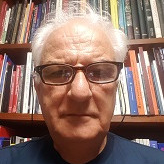Quantum Coherence and Information Transfer: from Quantum Optics to Biomolecules
A special issue of Entropy (ISSN 1099-4300). This special issue belongs to the section "Quantum Information".
Deadline for manuscript submissions: closed (31 October 2023) | Viewed by 1519
Special Issue Editors
Interests: quantum electrodynamics; open systems; time dependent spin Hamiltonians; quantum and semiclassical Rabi models
Special Issues, Collections and Topics in MDPI journals
Interests: quantum chemistry; quantum dynamics in condensed phases; nanoscale electronics; charge, energy, and information transfer; matter–radiation interaction
Special Issues, Collections and Topics in MDPI journals
Special Issue Information
Dear Colleagues,
This Special Issue is a continuation of the Special Issue on “Quantum Information and Quantum Optics” that was successfully published in Entropy the past year.
Quantum information is a steadily growing field of investigation in virtue of our increasing capability to observe and describe exquisite quantum effects appearing in diverse systems ranging from atomic and atom-radiation systems to complex chemical and biophysical systems. In all these systems, quantum information is produced by quantum coherence and, more specifically, by the quantum correlations inherent in their short-time coherent evolution. Conversely, the same quantum information framework is used to describe such correlations and determine their value in terms of information production and transfer, with potential applications of technological relevance. In fact, different entropy measures have been developed over the years to characterize quantum-type correlations, including quantum conditional entropy, mutual entropy, (relative) entropy of entanglement, and the strictly related entanglement of formation.
Quantum coherence plays a crucial role in quantum optics and could be used to convey quantum information. All fundamental models in the field of quantum optics imply the coherent evolution of quantum systems on appropriately short timescales. In fact, many non-classical features in the physical behavior of confined matter–radiation are attributable to the coherence inherent in the dynamic evolution of the system. A role for quantum correlations is also expected when partial quantum coherence survives long enough during the evolution of composite quantum systems.
Similarly, quantum coherence is critically important in a myriad of chemical and biological processes. Tunneling of electrons and protons are emblematic cases of coherence effects in charge and energy transfer reactions. Nontrivial quantum coherence effects have been highlighted, in recent years, by the evolution of spectroscopic techniques, such as two-dimensional electronic spectroscopy. The application of such techniques has shown that, despite the disorder of chemical and biological systems, quantum correlations might survive long enough to influence their behavior. This observation has motivated the rapid growth of research that aims to use quantum coherence to enhance the function of biophysical systems. Within this framework, information theory concepts such as the relative entropy of entanglement have been used to characterize the possible presence of quantum entanglement in photosynthetic systems.
The classes of systems in which quantum coherence plays, or can play, an important functional role have been further and significantly increased by the advances in nanoscale physics and chemistry over the past few decades, with the exploration of a great variety of systems ranging from Josephson junctions to low-dimensional materials (for example, graphene or transition metal dichalcogenides), single-molecule junctions, molecules interacting with cavity quantum fields or with surface plasmons in confined space. Some of these systems have aroused renewed interest for the opportunities they offer to perform quantum information transfer and quantum computing.
We solicit contributions to this Special Issue of Entropy, with particular emphasis on the underlying role of quantum coherence in the abovementioned research areas, as well as on fruitful links among such areas.
Prof. Antonino Messina
Dr. Agostino Migliore
Guest Editors
Manuscript Submission Information
Manuscripts should be submitted online at www.mdpi.com by registering and logging in to this website. Once you are registered, click here to go to the submission form. Manuscripts can be submitted until the deadline. All submissions that pass pre-check are peer-reviewed. Accepted papers will be published continuously in the journal (as soon as accepted) and will be listed together on the special issue website. Research articles, review articles as well as short communications are invited. For planned papers, a title and short abstract (about 100 words) can be sent to the Editorial Office for announcement on this website.
Submitted manuscripts should not have been published previously, nor be under consideration for publication elsewhere (except conference proceedings papers). All manuscripts are thoroughly refereed through a single-blind peer-review process. A guide for authors and other relevant information for submission of manuscripts is available on the Instructions for Authors page. Entropy is an international peer-reviewed open access monthly journal published by MDPI.
Please visit the Instructions for Authors page before submitting a manuscript. The Article Processing Charge (APC) for publication in this open access journal is 2600 CHF (Swiss Francs). Submitted papers should be well formatted and use good English. Authors may use MDPI's English editing service prior to publication or during author revisions.
Keywords
- quantum information
- quantum optics
- quantum coherence entanglement
- entropy
- 2D spectroscopy







